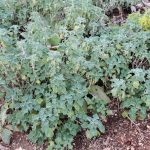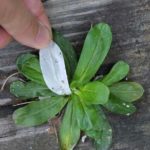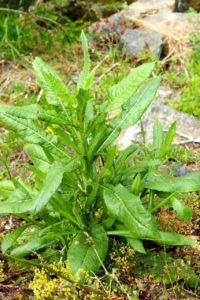
Oxtongue plant going up to seed
Oxtongue, or bristly oxtongue Helminthotheca echioides (formerly Picris echioides) commands respect. I got to know several of these plants when I lived at the farm on Belk Road South that popped up in my potted plant area. When I really studied their form I found them very beautiful. I really love Oxtongue hence all the photos.
I have had them in my urban garden but they’re not about at the moment. Their leaves, stalks and seed heads are all rough and prickly, hence the association with the rough tongue of an ox or cow. If you’ve been licked by a cow you’ll know what I mean.
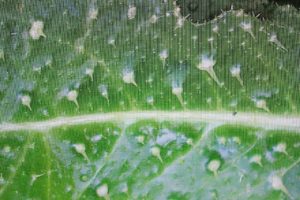
Close up of bristles with swollen bases
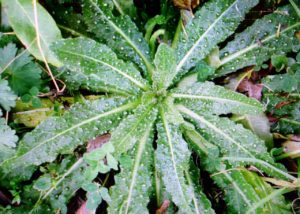
Oxtongue grows in a rosette form
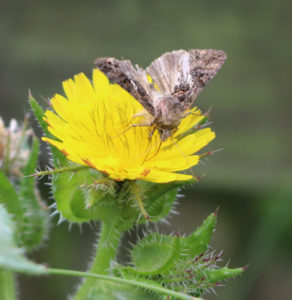
Butterfly on an oxtongue flower. I thought this was a moth but it was out in the daytime and fits a butterfly description not a moth.
Like their cousin dandelion in the Asteraceae family, they grow in a rosette radiating from the centre. The prickles are actually barbed bristles swollen at the base to stop animals eating them. But I know they’re protecting some good nutrition and I’ve been adding the leaves and flower heads to smoothies. When oxtongue goes to flower it sends up a stiff, strong stalk that’s branched and bristly. When I brush past, it feels like it’s combing my clothes and trying to stick to them. A taproot supports the tall stalk, and the pretty flowers are yellow, but orangy yellow as a bud. Flowering is from January through March.
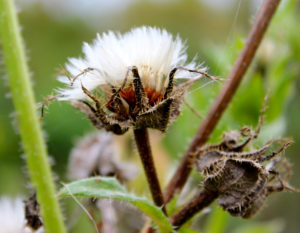
Oxtongue seedhead
The seed heads are pointed, a bit like a prickly container. The Greek name Helminthotheca means worm case, referring to the shape of the seed head, which opens up when the seeds mature. Its other Greek name, echioides, aptly means bristly
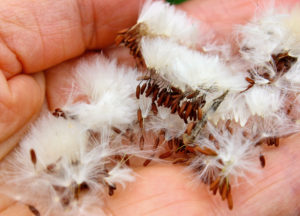
Oxtongue seeds
hairs. I love the soft tufts of fluff on the seeds, making them light to blow in 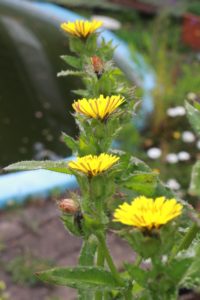 the wind to a
the wind to a
new home. On the farm I gathered the seeds, which don’tcross-pollinate but remain true to the parent.
Oxtongue is an annual or biennial native of Southern Europe, Southwest
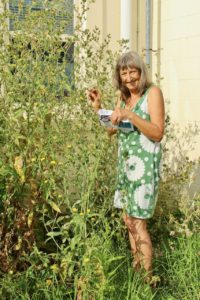
Julia harvesting oxtongue seeds
Asia and North Africa. It’s tough and likes to grow along roadsides and in cultivated land, waste places and even cracks in pavers or pots. It doesn’t seem fussy, though it dislikes shade.
Like many weeds it’s an opportunist that has
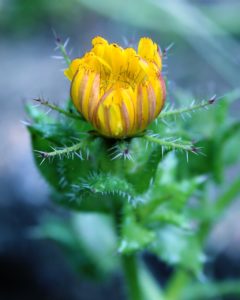
My favourite oxtongue flower photo
adapted well in New Zealand.
In Greece oxtongue is known as heeromourida, meaning widow. It’s said to be a favourite of widows there, who collect the young plants from autumn to spring and prepare the leaves by boiling them alone or with other greens and garnishing with lots of olive oil and lemon juice. We can extract oxtongue’s nutrition the same way or by using its young leaves in smoothies or soup, or by making herbal vinegar.
Oxtongue flower vinegar
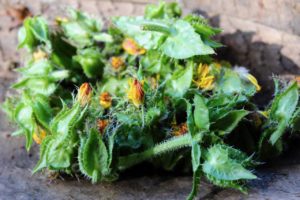
Oxtongue flower heads picked for vinegar
Pick the flowering tops of oxtongue and place loosely into a jar
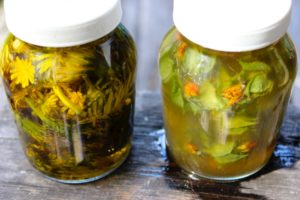
Oxtongue vinegar
with lots of space to allow the air to escape when you pour the cider vinegar to the very top. Put the lid on, with a round piece of wax paper or plastic in metal lids to prevent corrosion. Label and leave for four to six weeks in a cool place. Then strain to use in salad dressing or take a teaspoon in water in the morning, like plain cider vinegar but with extra nutrition.
